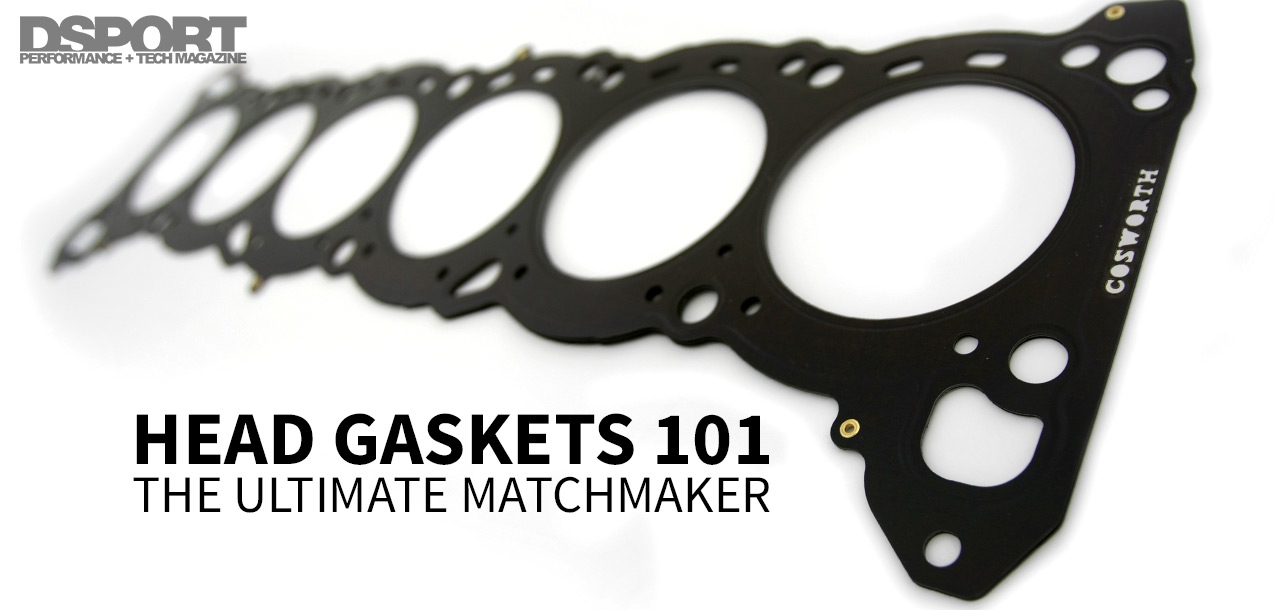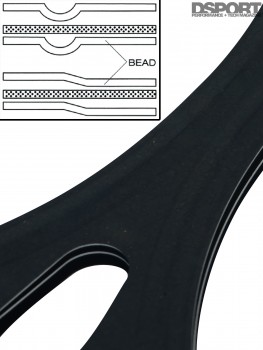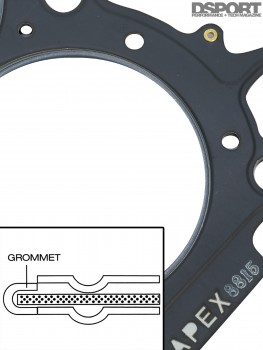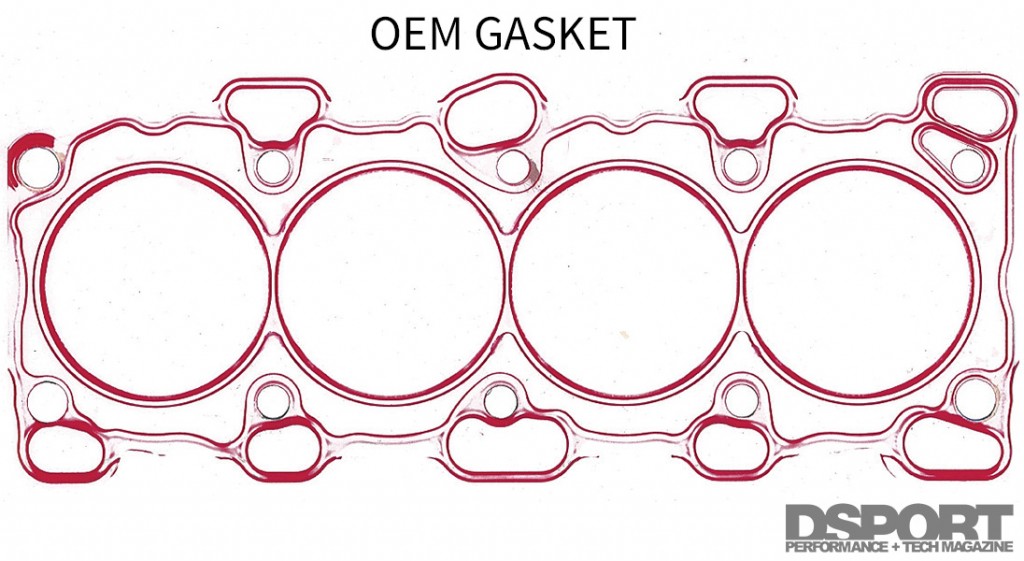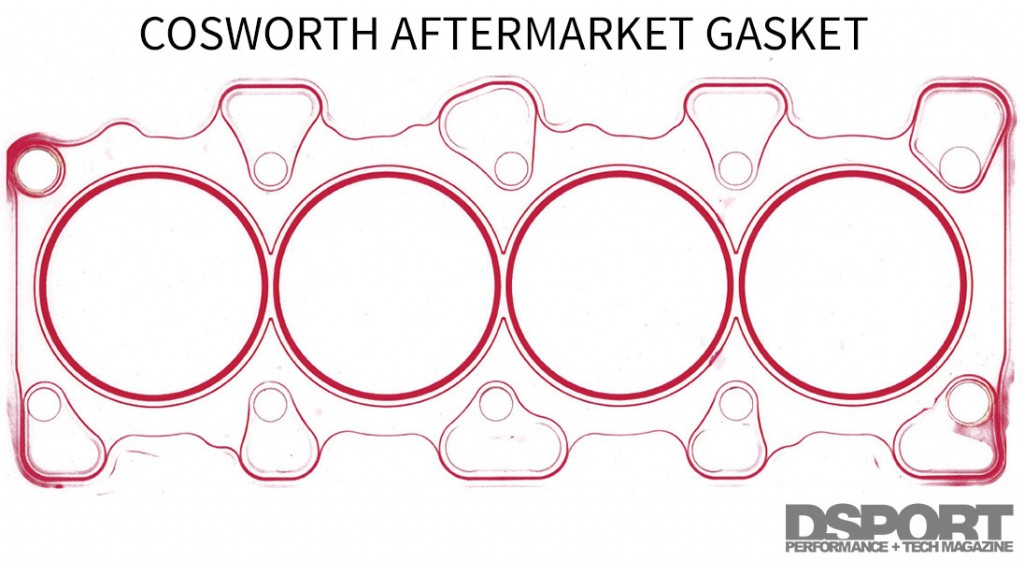Metal. liquid, or composite, the main function of any gasket is the same: seal the deal. Depending on the pressures to be contained, the flatness of the mating surfaces and the fluid being transferred there’s an ideal material and design for the gasket. Nearly all critical sealing surfaces on high-performance engines involve metal or liquid gaskets with composite gaskets being used sparingly in non-critical areas.
By Michael Ferrara
DSPORT Issue #105
Head of the Class
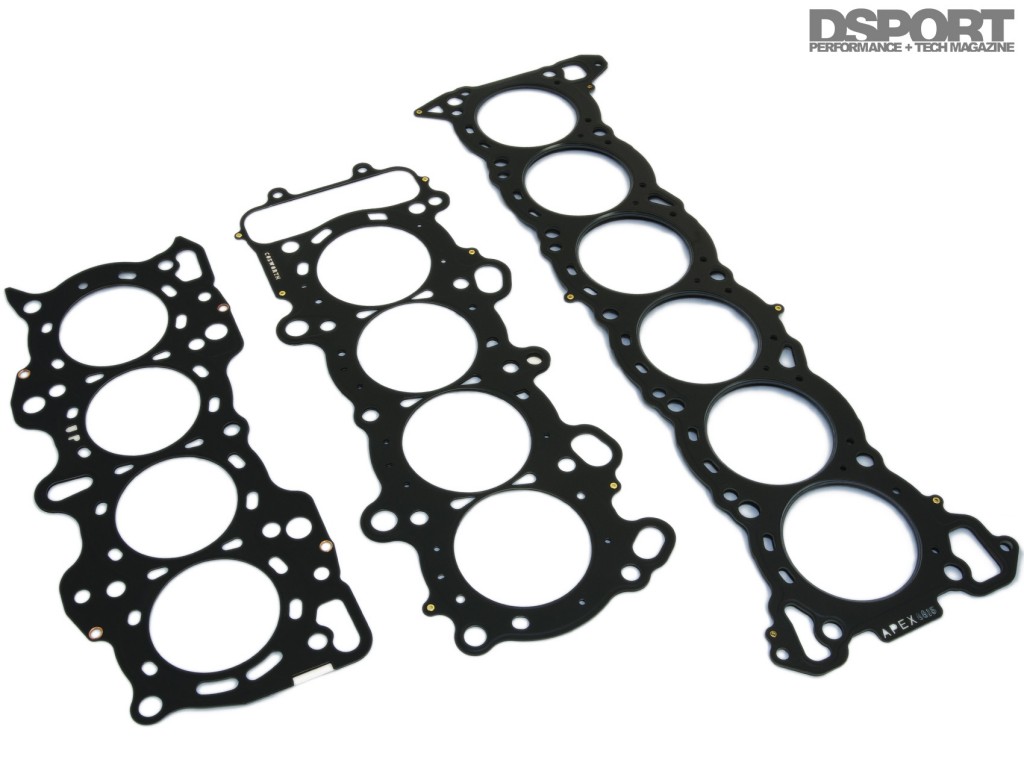 The most critical gasket seal in any engine is the head gasket. The head gasket provides the seal between the bottom half and top half of the engine. The head gasket must contain the extreme pressures in the cylinder while also sealing the oil drain and coolant passages between the head and block. While some factory and aftermarket gaskets perform well at lower power levels, engines that generate over 200 horsepower-per-liter require extremely-well-designed head gaskets. We’ve had great results with A’PEXi, HKS, GReddy, Power Enterprise, TOMEI POWERED and Cosworth gaskets on these applications. Today’s multi-layer-steel (MLS) head gaskets usually employ a bead, grommet or stopper technology for improved combustion chamber sealing.
The most critical gasket seal in any engine is the head gasket. The head gasket provides the seal between the bottom half and top half of the engine. The head gasket must contain the extreme pressures in the cylinder while also sealing the oil drain and coolant passages between the head and block. While some factory and aftermarket gaskets perform well at lower power levels, engines that generate over 200 horsepower-per-liter require extremely-well-designed head gaskets. We’ve had great results with A’PEXi, HKS, GReddy, Power Enterprise, TOMEI POWERED and Cosworth gaskets on these applications. Today’s multi-layer-steel (MLS) head gaskets usually employ a bead, grommet or stopper technology for improved combustion chamber sealing.
Breading it up
Most factory and some aftermarket head gaskets use a bead-style combustion chamber sealing surface. The relatively low cost of production makes it ideal for mass production. Unfortunately, the beaded head gasket offers sub-par performance under extreme combustion chamber pressures found on high-compression or high-power, boosted applications.
Grommet & Stoppers
Similar to a stopper-style gasket, a full grommet gasket uses an additional folded ring around the combustion chamber area. The grommet helps secure the combustion chamber gasses by increasing the sealing tension between the block and head. Some aftermarket gasket manufacturers offer a stopper- type gasket. On a stopper gasket the middle layer is folded over (folded U- shaped), increasing the compression tension between the headgasket and block, helping further seal the combustion chamber.
Both the stopper and full grommet style head gaskets have been used with great success over the years to contain combustion chamber gasses on engines generating over 1,500 horsepower to the wheels (for small displacement engines 3.0-liter and under) for short durations such as drag racing. The cost of both the stopper and full grommet gaskets are generally more expensive than the bead style, but it is a small price to pay to prevent a blown headgasket.
Head Gasket Development
Recently, Cosworth shared some of its development on its new high- performance head gasket lineup. From the testing, the pressure-sealing sample of the images shows how precise the definition of the sealing ring is around the cylinder. The brighter the red imprint around the combustion chamber, the higher the sealing force.
The OE gasket has very faint red areas illustrating the likelihood of premature gasket failure. On the Cosworth gasket, pronounced red rings are visible around the combustion chamber, signifying a good sealing surface. More interesting is the samples of some aftermarket gaskets which have poor sealing areas, even worse in some cases than the stock ones. All tests were performed on a brand new factory casting with standard 8740 ARP studs at the recommended torque.


